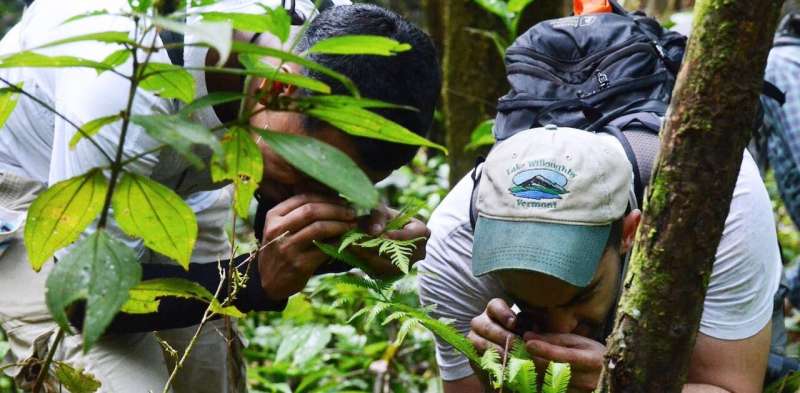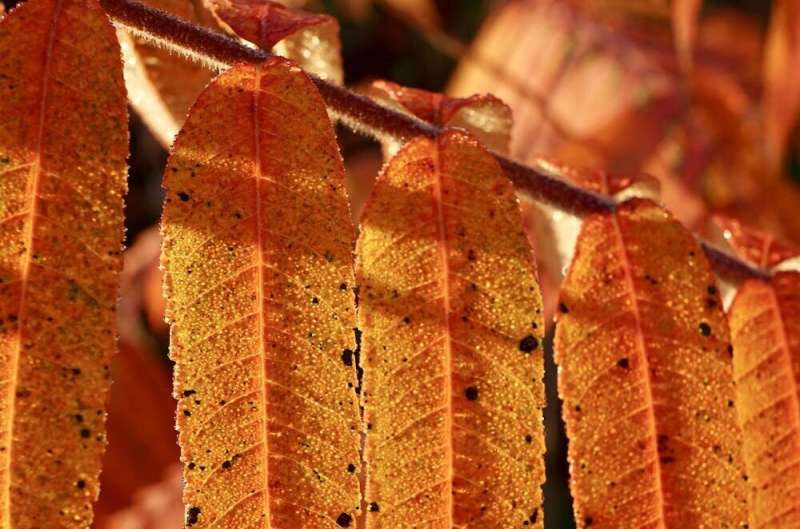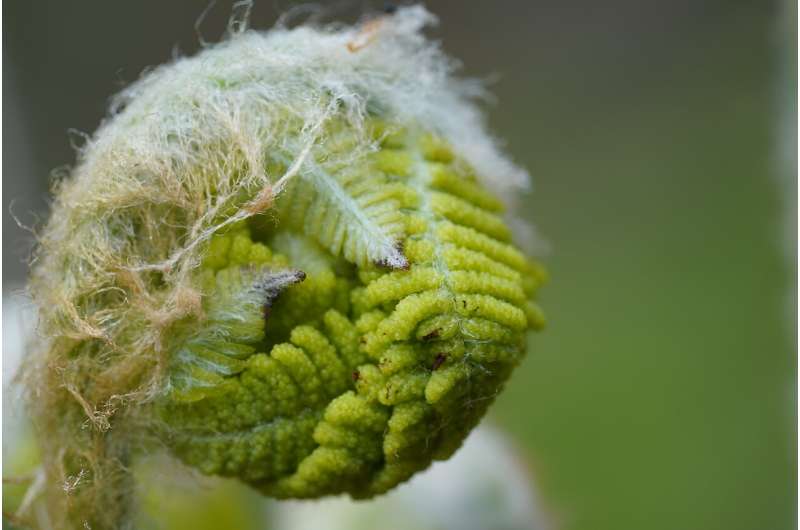This article has been reviewed according to Science X's editorial process and policies. Editors have highlighted the following attributes while ensuring the content's credibility:
fact-checked
trusted source
written by researcher(s)
proofread
Take a break from your screen and look at plants: Botanizing is a great way to engage with life around you

When you hear about the abundance of life on Earth, what do you picture? For many people, it's animals—but awareness of plant diversity is growing rapidly.
Our planet has nearly 300,000 species of flowering plants. Among animals, only beetles can compete with that number. There are more species of ferns than birds, more mints than mammals, and more beans than butterflies. Measured in total mass, plants make up 82% of all life on land across the globe.
We are plant scientists and co-founders of Let's Botanize, an educational nonprofit that uses plant life to teach about ecology, evolution and biodiversity. In the past several years we have witnessed a botanical boom, with participation in plant-based hobbies surging. From cultivating houseplants to foraging for wild foods and outdoor gardening, plant appreciation is on the rise.
Botanizing is spending time alongside plants in order to observe and appreciate them as living organisms—like birding, but with subjects that stay in place. When you botanize, a simple walk in the woods becomes an immersive experience shared with many species. Getting to know your nonhuman neighbors is a way to engage with a changing planet.
Plant collecting and colonialism
Botanizing has a deep and checkered history. Humans have been analyzing and classifying plants for thousands of years, often to figure out what they can safely eat or cultivate.
When Europeans began exploring and colonizing other parts of the world, they were interested in finding plants that were useful as food, medicine or for other purposes. For example, in the early 17th century, the Dutch East India Company forcibly colonized the Banda Islands in what is now Indonesia in order to monopolize the cultivation and lucrative trade of nutmeg (Myristica fragrans).
In 19th-century England, Victorians became obsessed with plants, especially ferns. This craze came to be known as pteridomania, or fern fever. It coincided with the height of European imperialism across the globe, which included widespread collection of valuable plants from faraway places.
Today, however, many botanic gardens and arboreta—gardens that focus on trees and shrubs—have shifted their mission to public education, scientific research and biodiversity conservation. They can be good resources for learning to botanize.
Why botanize?
Plants provide raw materials for the homes we live in, the food we eat and the oxygen we breathe. Without them, life as humans know it could not exist.
Nonetheless, many people think of plants more as a backdrop to life, rather than as a central part of it. Scientists and educators call this phenomenon plant awareness disparity—a widespread cognitive bias that leads people to underestimate the diversity and importance of plants.

Research has shown the value of being outside in natural green areas or around plants indoors. Even traditional western doctors are starting to prescribe nature walks to reduce stress and improve physical well-being. Botanizing can provide a reason to get outdoors, and spending time closely observing plants' minute structures is a great mindfulness practice.
We also see botanizing as a valuable alternative to spending time on social media. As many experts have observed, online platforms have become so individually tailored by algorithms that each user participates in their own version of reality, a trend that has enabled increasingly combative and antisocial behavior. Botanizing is an opportunity to take a break from these tailored worlds and deeply engage with local human and nonhuman communities.
Finally, since plants form the foundation of life on Earth, caring for plants is a way of caring for our planet. Botanizing is one simple way to inspire change in other aspects of our lives that prioritizes sustainability.
Tools of the trade
There are many ways to botanize. Typically it involves trying to identify a plant species, observing its form and structure or assessing how it survives in the landscape. Plants are everywhere and don't move, so this can be done in virtually any setting, including your windowsill or sidewalk.
So, how do you start? You can focus on plant structure, ecology, interactions, colors, textures or scents—or tastes, if you're bold. You don't need to travel far or spend a lot of money. There's much to learn from your houseplants, the food you cook, the wood grain of your furniture, the plants growing in your sidewalks, gardens or local green spaces.

Here are a few essential tools:
- A hand lens is a window into the minutia of the botanical world. It's as essential for a botanist as binoculars are for a birder. We recommend one with 10x magnification—that is, one that magnifies what you're looking at by a factor of 10.
- A local field guide is your reference textbook. A good field guide to your local plants will have images and detailed text that you can use to cross-reference your identifications.
- A plant identification app can help confirm your identifications. Machine learning algorithms are getting increasingly good at matching plant images with species. One popular choice is the Seek app, which is powered by iNaturalist, an online social network where people share information about living species and get help with identifications.
- Almost every region of the U.S. has local botanical clubs that typically hold regular meetings and organize workshops, online groups, botanizing days and more. Joining one is a great way to meet and learn from people with similar interests.
To germinate your initial interest, we recommend searching for a spark plant—one that excites, engages or is meaningful to you. It can be a plant that you are familiar with but haven't seen growing in real life, one that is totally new to you, or one that you associate with a special moment.
If botanizing is to reclaim its place as a nature-based hobby, we believe it is important to reimagine it as a critically evolved 21st century pastime. That means looking at plants with appreciation—not simply as products for human use but as foundational and interconnected members of life on Earth.
Provided by The Conversation
This article is republished from The Conversation under a Creative Commons license. Read the original article.![]()




















